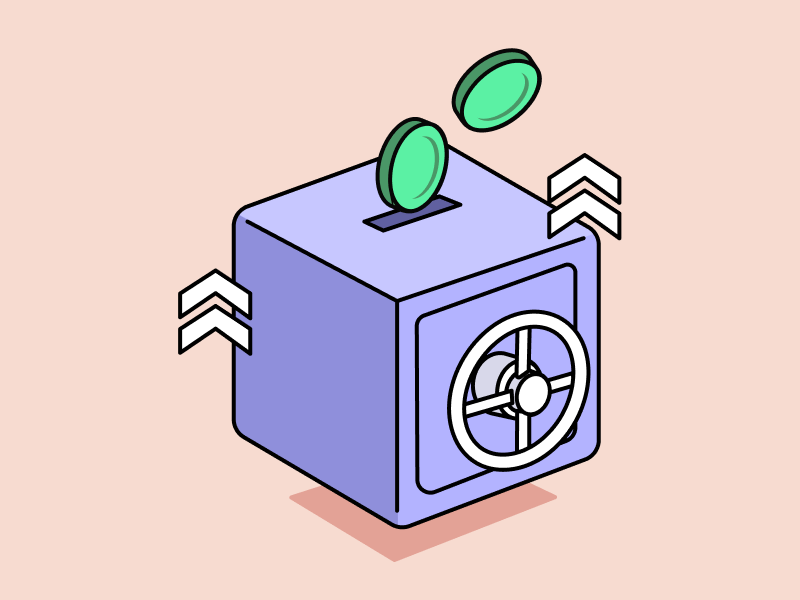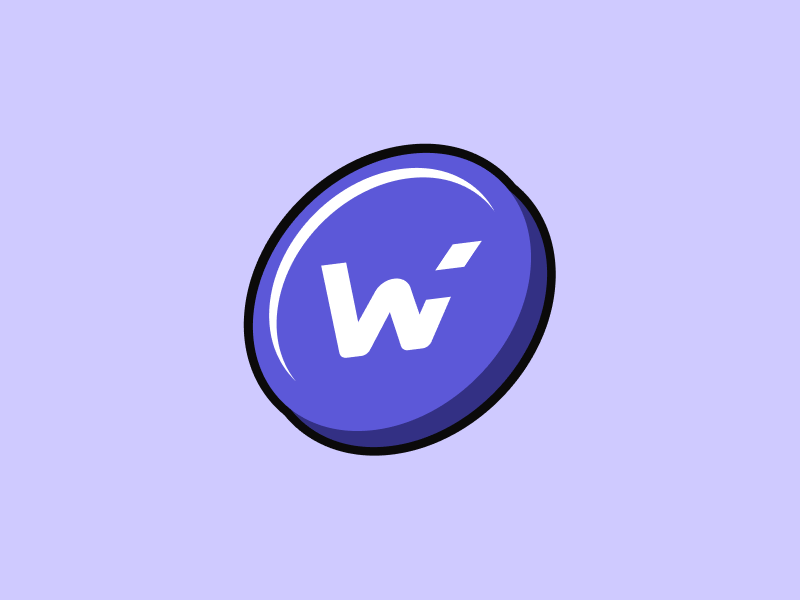How Account Abstraction Drives Web3 Adoption

When considering adopting blockchain-based applications (dApps) on Ethereum, one of the main challenges faced is the user experience (UX) complexity. To overcome this challenge, developers in the Ethereum ecosystem continue to innovate, one of which is through the development of Account Abstraction (AA). While AA brings significant potential, challenges related to its large-scale implementation remain an important focus. Even so, some protocols have successfully implemented AA on their products and created user convenience. Therefore, let’s take a look at which products have adopted Account Abstraction and how AA drives Web3 adoption with its various use cases.
Article Summary
- 📟 Account Abstraction (AA) is a technology that separates a user’s control over their assets from the execution of smart contracts, allowing users to interact with the blockchain without manual complexity.
- ✨ AA simplifies using crypto wallets by eliminating the need to manually store private keys, sign transactions, and pay gas fees. Smart contracts can efficiently manage all of these tasks.
- 📱 The primary goal of AA is to deliver a more user-friendly experience in interaction with Web3 applications (dApps) and drive widespread adoption of blockchain technology.
- 😎 Examples of products that implement AA include Lens Protocol, Safe Wallet, Visa, and the DeFi dYdX platform.
Overview of Account Abstraction
In our previous article, we explained what Account Abstraction (AA) is and how it works. Account Abstraction is a technology that separates the user’s control over their assets from the execution of smart contracts. It allows users to use their accounts without having complex manual interactions.
AA offers convenience in using crypto wallets. With AA, users do not have to store private keys, sign transactions, and pay gas fees. All these manual activities can be done automatically by smart contracts.
Adoption of Account Abstraction in the Web3 Ecosystem

Account Abstraction aims to overcome the complexity often associated with wallets and blockchain technology. It is to provide a more familiar interface for users to interact with Web3 applications (dApps). AA not only eases the user experience but also plays a vital role in driving the adoption of blockchain technology and crypto assets by more people.
As a key foundation, AA has great potential to strengthen user adoption and provide exciting opportunities for developers to create seamless application experiences. By prioritizing a better end-user experience, projects involving AA aim to expand the use of blockchain technology into real-world cases.
Account Abstraction has yet to be widely implemented due to the difficulty of its implementation. However, some protocols can implement AA on a small scale. Here are some examples of products that implement Account Abstraction:
Crypto Wallet – Safe Wallet
Safe Wallet is a smart contract wallet that integrates the ERC-4337 standard and signature abstraction for transaction management.
Safe Wallet’s smart contract has been tested and has a transaction value of approximately 35 billion US dollars on the Ethereum mainnet as of May 2023. It gives users and other projects, such as Nest and Worldcoin, confidence in Safe Wallet as their choice.
Safe Wallet is testing a social login feature via Google or Apple ID. This feature allows users to create and access wallets as easily as interacting with a Google or Apple account. It can also eliminate the need for users to remember seed phrases.

Automatic Payments – Visa
The contract account type, delegable accounts, utilize Account Abstraction for users to delegate signing rights to approved external contracts. The account can interact with the application seamlessly without manually approving each transaction.
Visa has introduced a solution that leads to the “real-world application of auto payments for self-custodial wallets.” In this system, users do not need to make a payment request every time they make an on-chain transaction.
Instead, the wallet can make recurring payments according to pre-defined conditions. While retaining full control over the wallet, users can approve automatic payments set up for specific subscription bills.
The app eases the user to set up programmable payment instructions, opening up the potential for real-life applications. As such, this solution brings practical benefits to users, removing the complexity of manual transactions and allowing users to organize payments more efficiently.
Decentralized Finance (DeFi) – dYdX
In the DeFi sector, dYdX (a perpetual trading platform) has leveraged Biconomy’s services to reduce barriers to the use of its app. dYdX uses the gas fee-free transaction component provided by Biconomy’s SDK as a solution to overcome the gas fee that is often an obstacle for users.
When a user interacts with the app and submits a transaction, the Biconomy SDK routes the fee payment to the paymaster, which pays the fee on behalf of the user.
Read more about how Account Abstraction works in this article.
Quoted from Messari, Biconomy developed a robust Account Abstraction SDK for apps. This SDK allows apps to remove the UX complexity of interacting with the blockchain (e.g., signing transactions and paying gas fees). It allows developers to focus on creating products for their users.
Token-bound Accounts – Sapienz
Token Bound Accounts is a smart contract wallet that is linked to a specific NFT. With TBAs, users can store any asset in the NFT that they own. For example, users can store ETH or even Cryptopunk NFTs in their BAYC NFT.
Stapleverse is implementing TBA on its NFT project, Sapienz. Sapienz is an NFT project that applies the dynamic NFT type to its work. Sapienz NFT owners can customize the NFT with cosmetics and items according to their owner’s preference. All items are not stored in the wallet but in the Sapienz NFT itself.
Read more about Token-bound Accounts in the following article.

Account Abstractions Adoption Development

In February 2023, Ethereum introduced the concept of ERC-6551, which introduced the idea of Token-bound Accounts. ERC-6551 allows NFTs to have their wallet. In other words, the NFT acts as a wallet with its own address. ERC-6551 itself was deployed three months later.
Then, on February 28, 2023, the ERC-4337 contract began to be deployed on the Ethereum network. EIP-4337 represented a significant advancement in implementing Account Abstraction as it did not change the Ethereum consensus layer protocol in a major way.
Although still in its infancy, ERC-4337’s presence is getting much attention from developers. ERC-4337 can be implemented on EVM-compatible blockchains such as BNB Chain, Polygon, and Avalanche.
By introducing new operation codes and utilizing smart contract mechanisms, development teams have great flexibility in implementing Account Abstraction with optimal operationality.
After the official implementation of ERC-4337, several entities such as Metamask and Instadapp started implementing Account Abstraction on their crypto wallets. Visa, Lens Protocol, Safe Wallet, OKX, and Circle followed them.
Conclusion
Account Abstraction is a tool to simplify technical interactions with blockchain and a strong driver in integrating this technology into daily life.
By reducing barriers and creating a more seamless experience, Account Abstraction has the potential to pave the way for broader Web3 adoption and creative applications of blockchain technology and crypto assets. It allows ordinary users to engage more efficiently and boosts innovation in various sectors.
Buying Crypto Assets on Pintu App
After knowing how Account Abstraction drives Web3 adoption, you can invest in crypto assets such as BTC, ETH, SOL and others without worrying about fraud on Pintu. In addition, all crypto assets on Pintu have passed a rigorous assessment process and prioritize the principle of prudence.
The Pintu application is compatible with various popular digital wallets, such as Metamask, to facilitate transactions. Download the Pintu app on Play Store and App Store! Your safety is guaranteed because Pintu is regulated and supervised by Bappebti and Kominfo.
In addition to making transactions on the Pintu app, you can also learn more about crypto through various Pintu Academy articles that are updated weekly! All Pintu Academy articles are created for educational and knowledge purposes, not as financial advice.
References
- Seth Bloomberg, “The Account Abstraction Landscape: ERC-4337, Bundlers, and Paymasters”, Messari, accessed pada 22 Agustus 2023.
- Certik Team, What is Account Abstraction? Certik, accessed 22 Agustus 2023.
- Binance Team, A Primer on Account Abstraction, Binance Research, accessed 22 Agustus 2023.
- Vitalik Buterin, ERC 4337: account abstraction without Ethereum protocol changes, Medium, accessed 23 Agustus 2023.
- Squads Team, Exploring Account Abstraction Use Cases, Squads, accessed 23 Agustus 2023.
Share
Related Article
See Assets in This Article
ETH Price (24 Hours)
Market Capitalization
-
Global Volume (24 Hours)
-
Circulating Supply
-



Social Media – Lens Protocol
Lens Protocol is one of the social media provider platforms that implement Account Abstraction. All activities in Lens-supported applications run on-chain, such as posting, commenting, and changing profile metadata. Users must approve every transaction and pay the associated gas fee.
The Lens team implemented AA through the dispatcher to alleviate this UX issue. This feature provides a tool for users to delegate signing rights to the dispatcher, which will also pay the gas fee for the user.
Thus, users can interact with dApps without constantly approving and having the native token to pay the gas fee.
Also read: What is Lens Protocol? A Protocol that implements Account Abstraction in Web3 ecosystem.